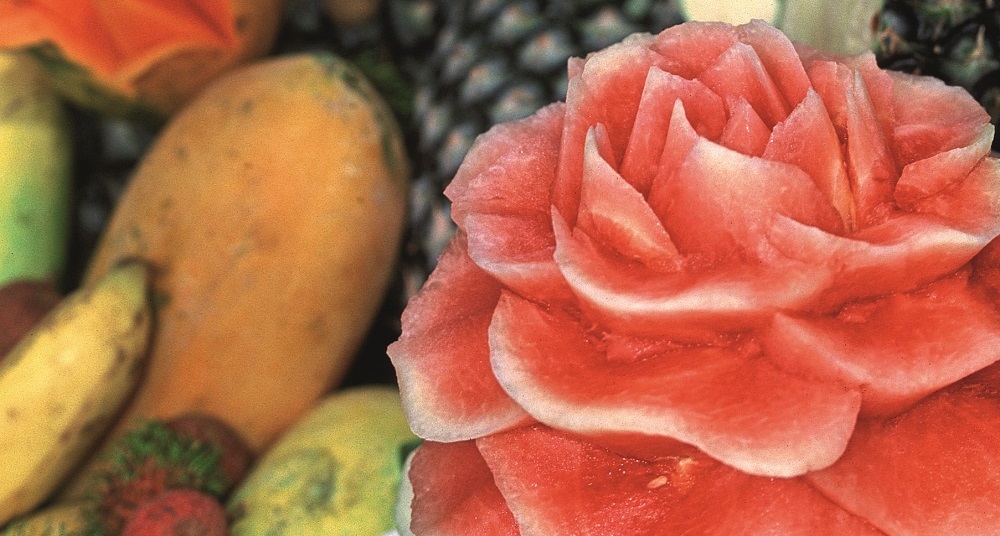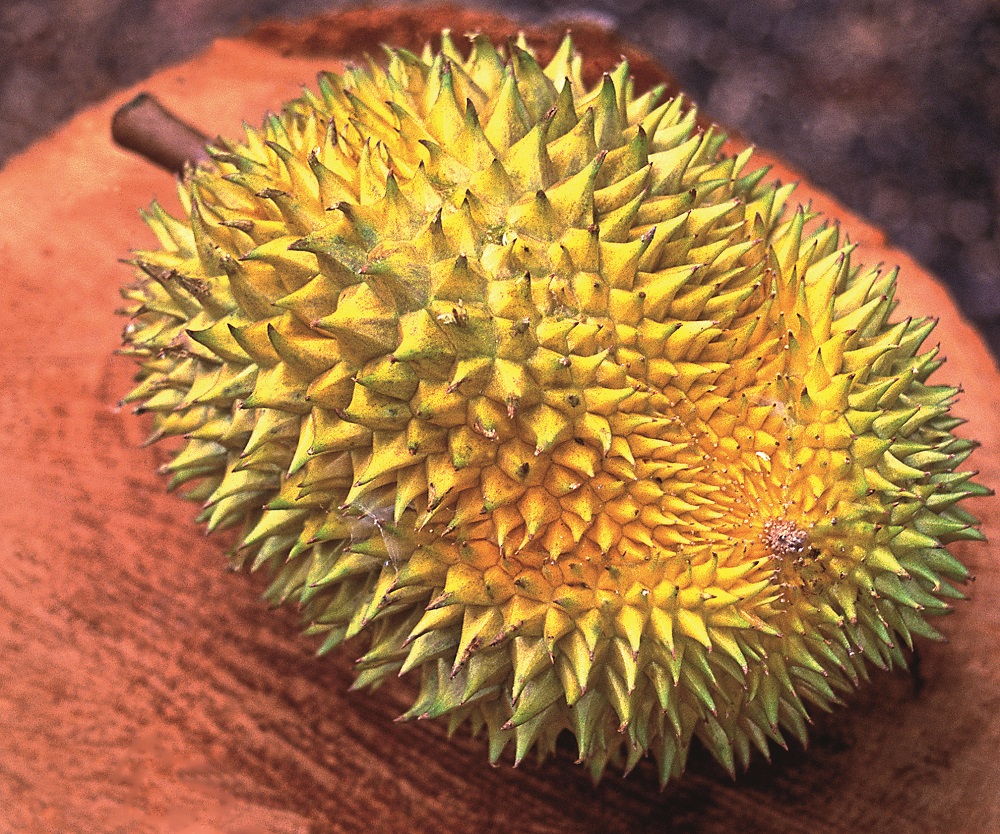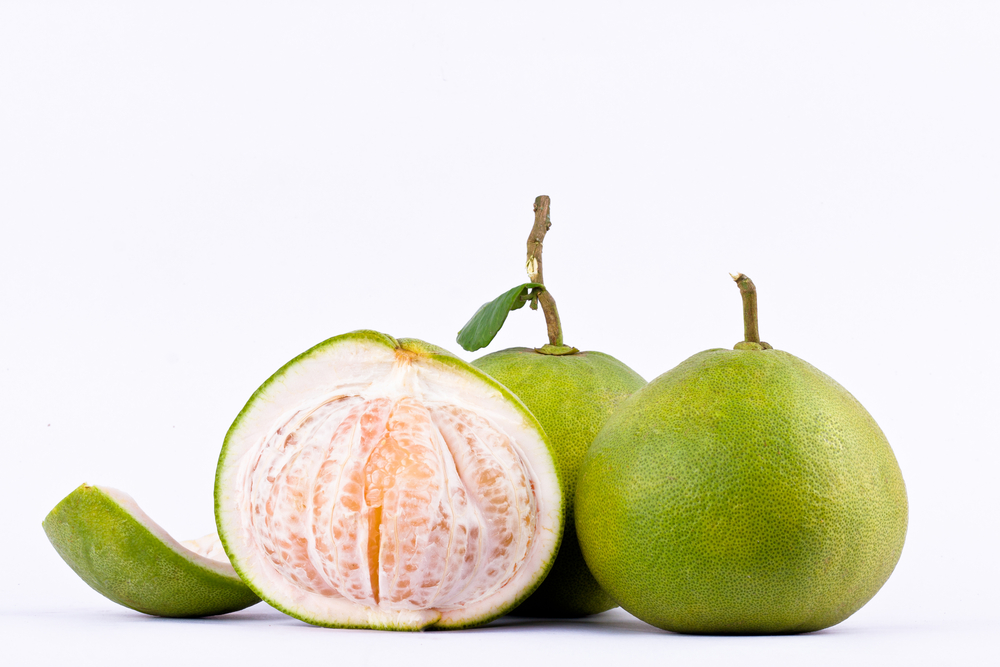It’s hard not to visit a Malaysian market and be captivated by the unusual tropical fruits available. These range from the big and small to the sweet and sour, rough to smooth-skinned and even the brilliantly colourful to those that are well camouflaged.
While most are available in the large supermarkets, some are only available in remote farmers’ markets and in East Malaysia, local markets called tamu. It’s not only the differences these tropical fruits have with temperate fruits, but also the differences within these differences with numerous varieties of durian, bananas, and papaya for example.
Here’s a selection of some tropical fruits that are available in Malaysia and throughout the region.
Durian
Durian is known as the king of fruit possibly for its size and, in Malaysia, its revered status. While some won’t touch this football-sized, hard spiky fruit, plenty of Malaysians will drive many kilometres to seek it out from their favourite durian stall which has sourced the fruit from deep within the jungle.
Noted English novelist Anthony Burgess who taught at the Malay College in Kuala Kangsar was not one who would travel to eat it, as he described it as “like eating sweet raspberry blancmange on the toilet.” Many ignore the pungent odour while devouring the custard-like fleshy interior.
Be warned though, as durian will repeat itself long after it’s consumed – and don’t take it, or mangosteen (complementing the king durian as the queen of fruits) into hotels, as both are banned in most – the latter for its purple-staining peels, the former for its far-reaching aroma.
There are many species and numerous cultivars, with the ‘D24’ variety arguably the finest. When in Malaysia, endear yourself to the locals by suggesting that Malaysian durian is better than Thai durian. Reverse the argument when in Thailand.
Pomelo
Pomelo is the largest of all the citrus fruits and resembles a green grapefruit on steroids. Within the green outer layer and thick white pith are 10 to 15 segments each of which is full of hundreds of juicy sacs. It’s juicy, but not as juicy as grapefruit, and it has the same delicious citrus tang.
The juicy sacs are large and often separated from the segments and used to add zest to salads. A visit to Ipoh in Perak would be incomplete without stopping to buy a pomelo or two from the stands lining the road on the southern side of the city.
Rambutan
The white fleshy fruit and seed are contained within a red or yellow “hairy skin” (its name is in fact derived from rambut, which means “hair” in Bahasa Malaysia).
The flesh is slightly smaller than a golf ball and while it’s related to the lychee and longan, rambutan has its own sweet flavour profile. They are sold in bunches with long stems attached and eaten fresh. Simply pull the skin apart forcibly to reveal the smooth flesh inside.
Salak
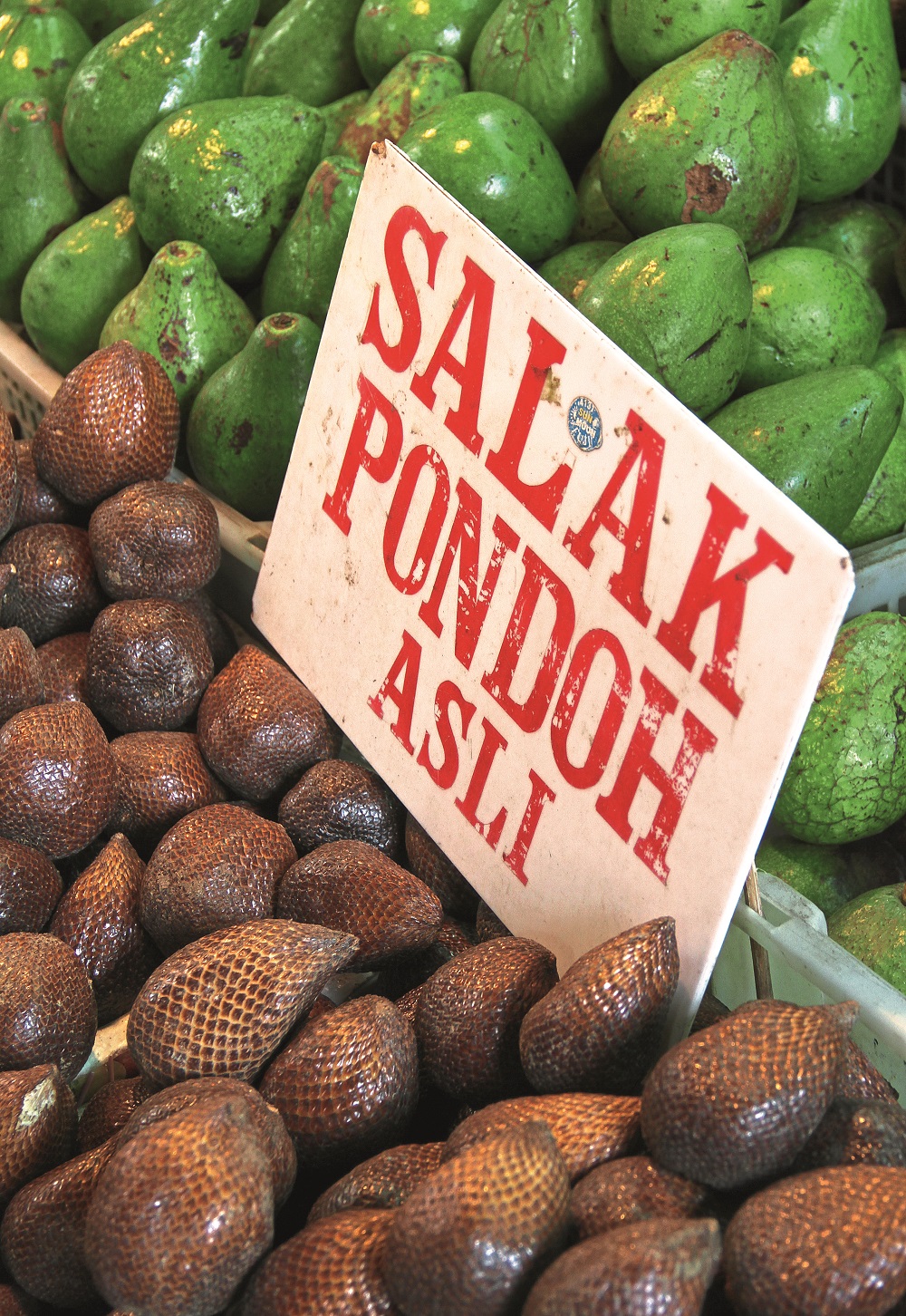
This snakeskin fruit – so called for its reddish-brown scaly skin – is an edible fruit of a palm tree that can be found in Malaysian markets, although it’s not as common as many other fruits. It’s a native of the Indonesian islands of Java and Sumatra, although it’s also grown and harvested in parts of Malaysia.
Peeling away the thin skin reveals three hard fleshy segments that have the appearance of large garlic cloves. Salak has the general texture and consistency of apple, is not overly sweet, and is more commonly seen in rural areas than the cities, especially those in Sarawak and Sabah.
Cempedak
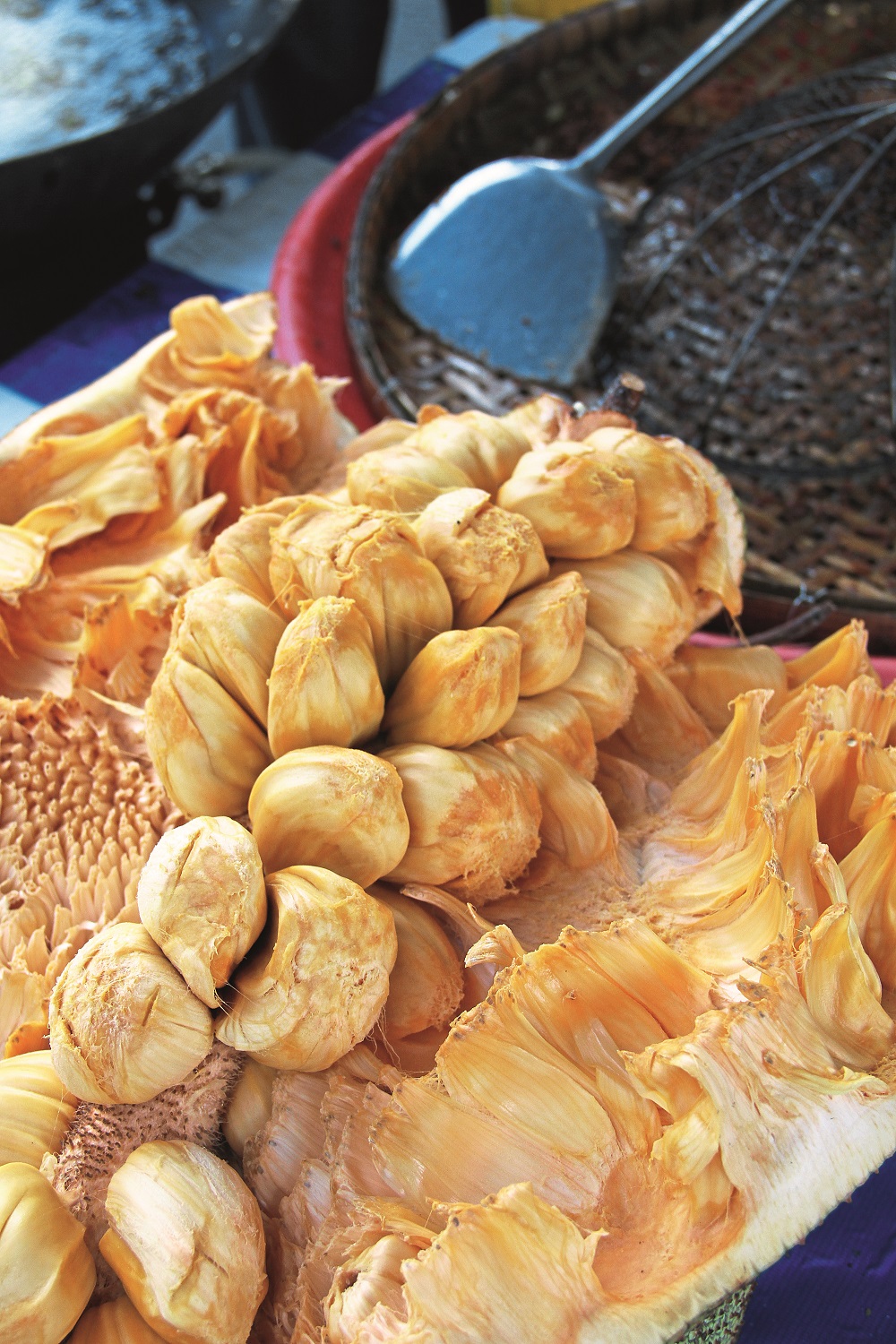
A fruit of Malaysia (and other parts of the region), the cempedak is also one of the largest found, along with jackfruit (they are both of the same genus). Its green pocked outer flesh is hacked open to reveal fleshy yellow balls on the interior which have a strong pungent smell and taste. (Some observers even suggest they are more aromatic than durian!)
It is often coated in batter, deep-fried, and sold as a tasty snack in Malaysian markets. The fruit is high in fibre and vitamin C and is even processed into delicious local ice cream served on a stick (ice cream potong). While not always easy to find, local ice cream made from cempedak and other flavours like jackfruit, coconut, and durian, is worth seeking out.
This article was originally published in The Expat magazine (November 2016) which is available online or in print via a free subscription.
"ExpatGo welcomes and encourages comments, input, and divergent opinions. However, we kindly request that you use suitable language in your comments, and refrain from any sort of personal attack, hate speech, or disparaging rhetoric. Comments not in line with this are subject to removal from the site. "


